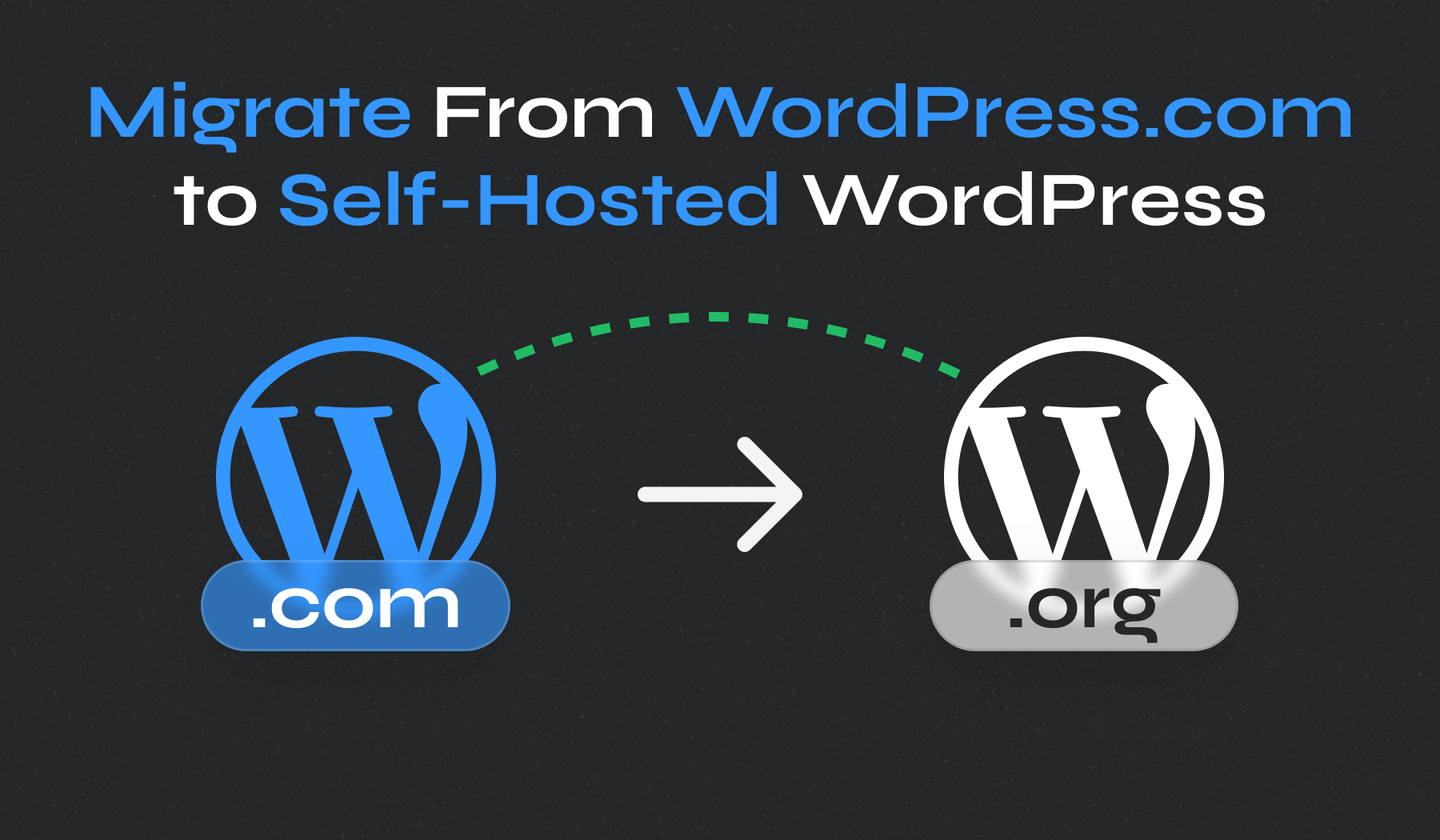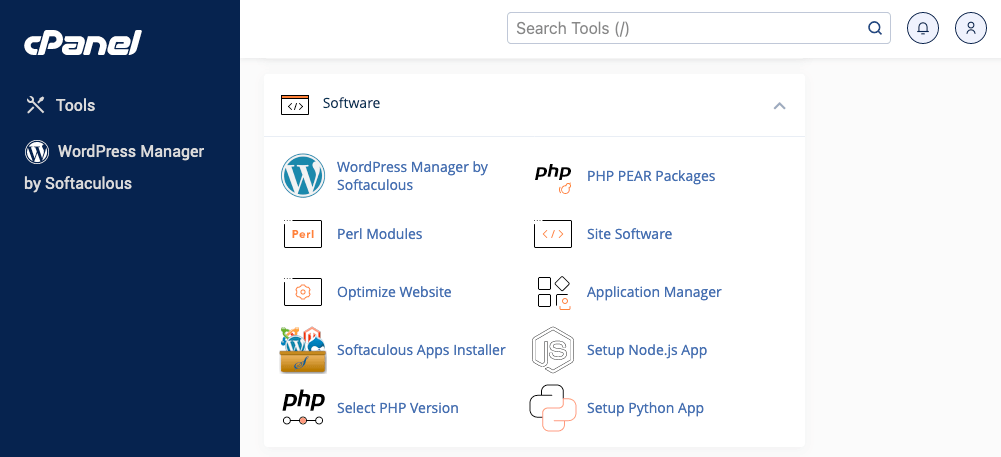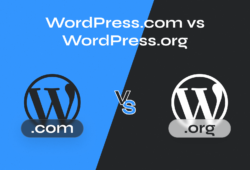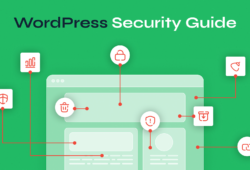
Are you feeling limited by WordPress.com’s capabilities? Imagine having the freedom to design your site exactly how you envision it, with access to a vast library of plugins and themes. That’s what WordPress.org can offer you!
Moving from WordPress.com to WordPress.org requires careful planning, but with the right guidance, it’s an exciting opportunity to expand your site’s potential. In this guide, we’ll walk you through every step to ensure a smooth and successful migration.
Table of Contents
- Step 1. Understanding Self-Hosted WordPress
- Step 2. Choose a Web Hosting Provider and a Domain Name
- Step 3. Export the WordPress.com Site to WordPress.org
- Step 4. Install WordPress
- Step 5. Import Content into Your Self-hosted Website
- Step 6. Finalize the WordPress.com to WordPress.org Migration
Step 1. Understanding Self-Hosted WordPress
Before we dive into the migration process, let’s take a moment to understand what a self-hosted WordPress site is and why it can be a game-changer for your website.
A self-hosted WordPress website uses the open-source WordPress.org software and is hosted on a web server provided by a third-party hosting company. This setup gives you complete control over your site, including access to backend files, databases, and the ability to customize themes and plugins to your heart’s content. Think of it as owning your own house instead of renting—more freedom, but also more responsibility.
Here are the key features and requirements of a self-hosted WordPress website:
- Hosting and Domain: You’ll need to purchase a hosting plan from a web hosting provider and register a domain name.
- WordPress Installation: You must download the WordPress.org software from WordPress.org and install it on your web server.
- Customization: Enjoy the flexibility to install any themes and plugins you want, customize your site’s design and functionality, and even tweak the underlying code.
- Control and Ownership: You have full ownership of your website and its content. This means complete control over site management, data, and backups.
- Costs: While the WordPress software itself is free, you will incur costs for hosting, domain registration, and any premium themes or plugins you choose to use.
- Maintenance and Security: You’re responsible for maintaining your website, including updates to WordPress core, themes, and plugins, as well as implementing security measures to protect your site from threats.
A self-hosted WordPress website offers more flexibility, control, and potential for customization compared to the hosted WordPress.com service. It’s a popular choice for businesses, bloggers, and developers who want a robust and scalable web presence.
Curious to learn more? Check out our detailed comparison on WordPress.com vs WordPress.org. It’s packed with insights to help you decide if this move is right for you!
Step 2. Choose a Web Hosting Provider and a Domain Name
Alright, let’s get started with the basics! To move your website from WordPress.com to a self-hosted WordPress, you’ll first need a web hosting provider and a custom domain name. Think of web hosting as your website’s home on the internet and the domain name as its address. If you’ve been using something like yourblog.wordpress.com, now’s your chance to switch to a sleek new address, like yourblog.com.
But how do you pick the right host? Look for a hosting provider that specializes in WordPress and fits your budget. Many hosts offer one-click WordPress installations, making the setup a breeze. Compare features, prices, and reviews to find the best match for you.
Most hosting providers will offer a domain name as part of their package. But if you prefer, you can buy a domain name separately from a domain registrar. Having your own domain name looks professional and makes it easier for people to find your site.
And that’s it! With your hosting and domain sorted, you’re ready for the next step.
Step 3. Export the WordPress.com Site to WordPress.org
Now, it’s time to pack up your content and move it to your new home on WordPress.org. This step is all about exporting your current site from WordPress.com.
Here’s how to do it:
- Log into Your WordPress.com Dashboard: Head over to your WordPress.com account and log in.
- Navigate to Tools > Export: In your dashboard, look for the Tools section in the left-hand menu and click on Export.
- Choose What to Export: You’ll see an option to export all your content or just specific parts of it. If you’re moving everything, click the Export All button. If you want to be selective, click the downward arrow and choose the specific content you want to export—like posts, pages, comments, custom fields, categories, and tags.
- Download the Export File: Depending on your site’s setup, the screen might look a bit different, especially if you have plugins installed. Just select “All Content” or the specific types of content you want, and then hit the “Download Export File” button.
This will generate an XML file containing all your chosen content. Keep this file handy because you’ll need it for the next step.
And there you have it! You’ve successfully exported your content from WordPress.com. Next up, we’ll get everything set up on your shiny new WordPress.org site.
Step 4. Install WordPress
It’s time to set up WordPress on your new self-hosted site. Installing WordPress is pretty straightforward, and most hosting providers make it super easy with one-click installations.
Here’s how to do it:
- Access Your Hosting Control Panel: Once you’ve logged into your hosting account, look for the control panel. This could be something like cPanel or Plesk, depending on your host.
- Find the WordPress Installation Tool: Most hosting services have a one-click WordPress installation feature. It’s usually located under sections named Website or Software and Services. Tools like Softaculous, Fantastico, and QuickInstall are common and make the process a breeze.
- Start the Installation Process: Click on the WordPress installer, and it will guide you through the setup process. You’ll need to enter a few details like your site name, username, and password. Make sure to jot these down somewhere safe!
- Choose and Activate a WordPress Theme: After WordPress is installed, you’ll want to pick a theme that matches your style. You can choose from thousands of free and premium themes. If you want to keep a consistent look with your old site, pick a theme similar to your WordPress.com theme. Or, take this opportunity to refresh your site’s look with something new!
And just like that, you’ve installed WordPress on your new self-hosted site! You’re now ready to import your content and start enjoying all the benefits of a self-hosted WordPress site.
Step 5. Import Content into Your Self-hosted Website
Now, it’s time to bring over all your content from WordPress.com. This part is like unpacking all your stuff and setting it up in your new home. Let’s make sure everything arrives safely and finds its place.
Here’s how to do it:
- Log into Your Self-Hosted WordPress Dashboard: Head over to your new WordPress site and log in using the credentials you set up during the installation.
- Navigate to the Import section: In the left-hand menu of your dashboard, find Tools and click on Import. This section lists various platforms from which you can import content.
- Select the WordPress Importer: In the list of import options, find WordPress. If this is your first time using this tool, you’ll need to install the WordPress Importer plugin. Don’t worry, it’s quick and easy. Just click Install Now.
- Run the Importer: After the plugin is installed, click Run Importer. You’ll be redirected to a screen where you can upload your content.
- Upload Your Export File: Click the Browse button and select the XML file you exported from WordPress.com. Then, click Upload file and import.
- Assign Content to Users: You’ll be asked to assign the imported content to an existing user on your new site or create a new user. Choose the option that works best for you.
- Download and Import File Attachments: Make sure to check the box that says Download and import file attachments. This step is crucial for bringing over all the media files associated with your posts and pages.
- Start the Import: Click Submit to start the import process.
WordPress will handle the rest, importing your posts, pages, comments, custom fields, categories, and tags.
Once the import is complete, you’ll see a success message. It’s a good idea to browse through your site and make sure everything looks just right. Check for any missing content or broken links and fix them as needed.
And there you have it! Your content has made the journey from WordPress.com to WordPress.org. Up next, we’ll finalize the migration to ensure everything is running smoothly.
Step 6. Finalize the WordPress.com to WordPress.org Migration
Now it’s time to put the finishing touches on your migration. This step ensures everything is set up correctly and your visitors can find your new site without a hitch.
Here’s what you need to do:
- Set Up Redirects and Make the Old Site Private: If you’re using the same domain, you’ll want to redirect traffic from your old WordPress.com site to your new self-hosted site. This helps retain your visitors and SEO rankings. WordPress.com offers a paid Site Redirect service for this purpose.
To use this feature, go to your WordPress.com Dashboard, navigate to Settings > General, and find the Redirect link in the Site Address section.
Enter your new domain name here. This service costs $13 annually but is worth it to ensure a seamless transition.
If you decide not to redirect, you can make your WordPress.com site private. Just go to Settings > General, find the Privacy section, and set your site to Private. Don’t forget to save your changes! - Update DNS Settings: If you’re using a new domain or need to update your DNS settings to point to your new web host, now’s the time to do it. Keep in mind that DNS changes can take up to 48 hours to propagate, so be patient.
- Check Your Content: Go through your new site and make sure all your posts, pages, and media have been imported correctly. Look out for broken links, missing images, or formatting issues and fix them as needed.
- Update Permalinks: Head over to Settings > Permalinks in your WordPress dashboard. Make sure the permalink structure matches what you had before or update it to a new format if you prefer. This helps maintain your SEO and keeps your URLs consistent.
- Configure Widgets: If your new theme supports widgets, you might need to re-add and configure them. This is a great time to organize your sidebar and footer areas to make sure everything looks just right.
And that’s it! You’ve successfully finalized your migration from WordPress.com to WordPress.org. Take a moment to admire your work and feel proud of the new, improved home for your website. There are just a few more steps to optimize and secure your site, so let’s keep going!
Optimizing and Securing Your New WordPress Home
Congratulations on making it this far! Your website has successfully moved to its new home on WordPress.org. Now, let’s ensure everything is running smoothly and your site is ready to shine. These post-migration steps will help you optimize, secure, and grow your new site.
- Optimize Your Site for Search Engines. SEO is crucial for making your website visible to your target audience through search engines like Google.
- Optimize Your Site’s Performance. A fast website keeps visitors happy and improves your search engine ranking.
- Secure Your Website. Protecting your site from hacks, data breaches, and malware is paramount.
Migrating from WordPress.com to WordPress.org opens up a world of possibilities for your website. While the process involves some technical steps, the freedom, flexibility, and control you gain are worth the effort.
You’ve taken a significant leap forward in your digital journey. Now, with your new self-hosted WordPress site, the sky’s the limit. Happy blogging!













February 11, 2016 7:33 am
I really like wordpress especially for my online product marketing
January 9, 2017 8:15 am
I always use wordpress.
I just love the wordpress because of its flexibility and opportunities.